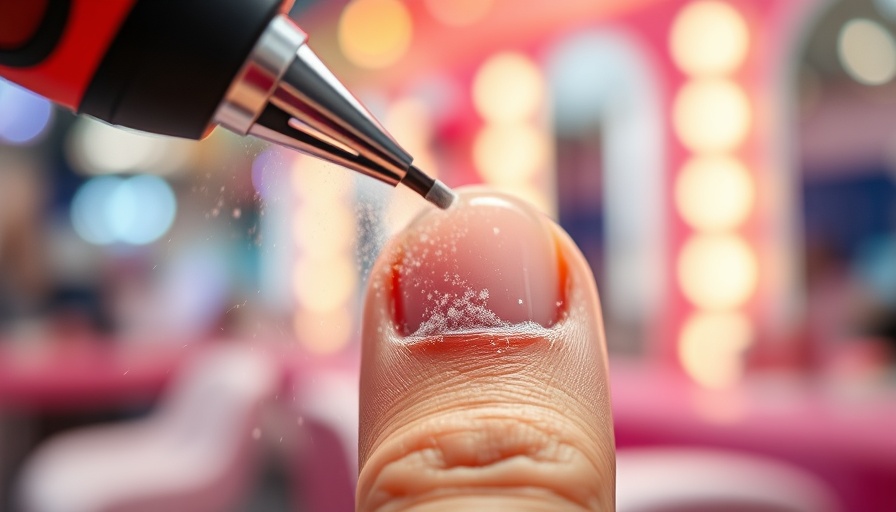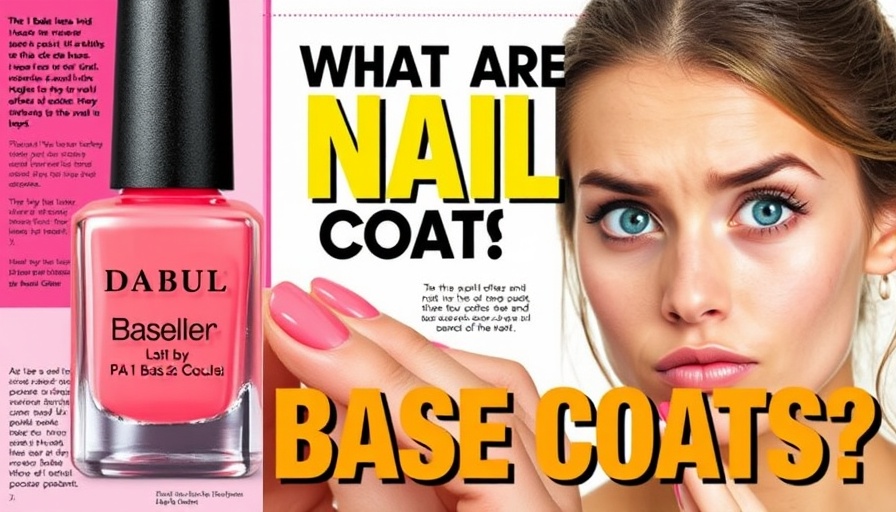
Understanding Nail Sensitivity: Why Do We Feel the Burn?
Nail services are as much about aesthetics as they are about comfort. Yet, many consumers endure a burning sensation while filing their nails without question. Why does this happen? It's rooted in a common misunderstanding: nails may appear like living tissues due to their vibrant colors and shapes, but they are actually made of a non-living protein called keratin. This raises an intriguing question: how can filing, a seemingly benign procedure, lead to discomfort?
The Role of the Nail Bed in Sensation
The answer lies beneath the nail plate. While the nails themselves don't have nerves, the nail bed—the living skin underneath—does. When filing occurs, particularly with aggressive tools, the friction creates heat that travels to the nail bed, triggering pain receptors. This is akin to wearing an oven mitt that’s too thin; the warmth of the pan burns through the mitt, leading to a sharp reminder to handle the situation more gently. Understanding this connection is key for anyone seeking nail care, whether at a salon or at home with DIY kits for nail grooming.
The Consequences of Over-Filing: Thinning Nails
Another factor contributing to discomfort during nail services is the thinning of the nail plate, often resulting from over-filing. Users should be aware that even gentle nail care can have adverse effects if not done correctly. As nails grow thinner, they lose their ability to protect the sensitive nail bed. This makes them more susceptible to damage, leading to a vicious cycle where more filing leads to more sensitivity.
Practical Tips for a Pain-Free Nail Experience
1. **Choose the Right Salon**: Not all nail salons are created equal. Researching and choosing a reputable salon can make all the difference in your experience. Look for reviews on services and inquire about their filing techniques; a skilled technician will prioritize comfort as much as appearance.
2. **Ask About Tools**: Ensure that the salon uses appropriate tools. Gentle files and buffers can reduce the risk of heat buildup. If you notice discomfort, communicate this with your technician for adjustments.
3. **Consider Your Nail Care Routine**: At home, protect your nails with moisturizing creams and consider DIY foot soaks with hydrating ingredients to maintain healthy nails. Explore natural nail care options like vegan nail polish brands that are free from harsh chemicals.
Wrapping Up the Nail Filing Conundrum
Understanding why nails burn during filing allows clients to advocate for themselves in nail salons and take a more proactive approach to their nail health. Whether exploring manicure vs pedicure differences or opting for popular services like gel manicures or acrylic nails, comfort should never be compromised. The knowledge you now have can empower you to choose nail services wisely and help foster a community that prioritizes safe and enjoyable nail care.
So, the next time you find yourself in a chair at a nail salon, remember: knowledge is power, and your comfort matters most. Keep these insights in mind and elevate your nail care routine to ensure a delightful experience every time you visit a nail spa.
 Add Row
Add Row  Add
Add 




Write A Comment